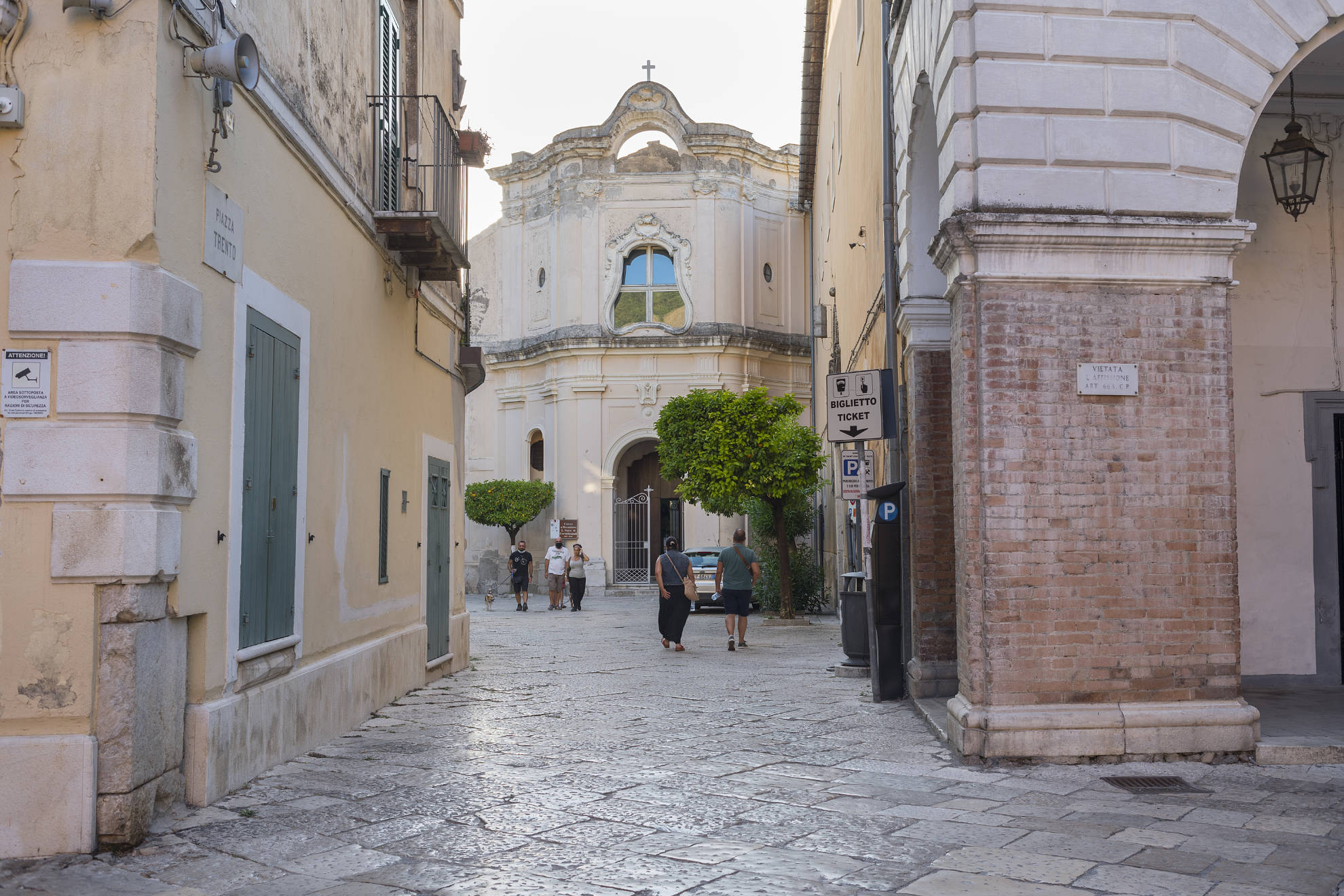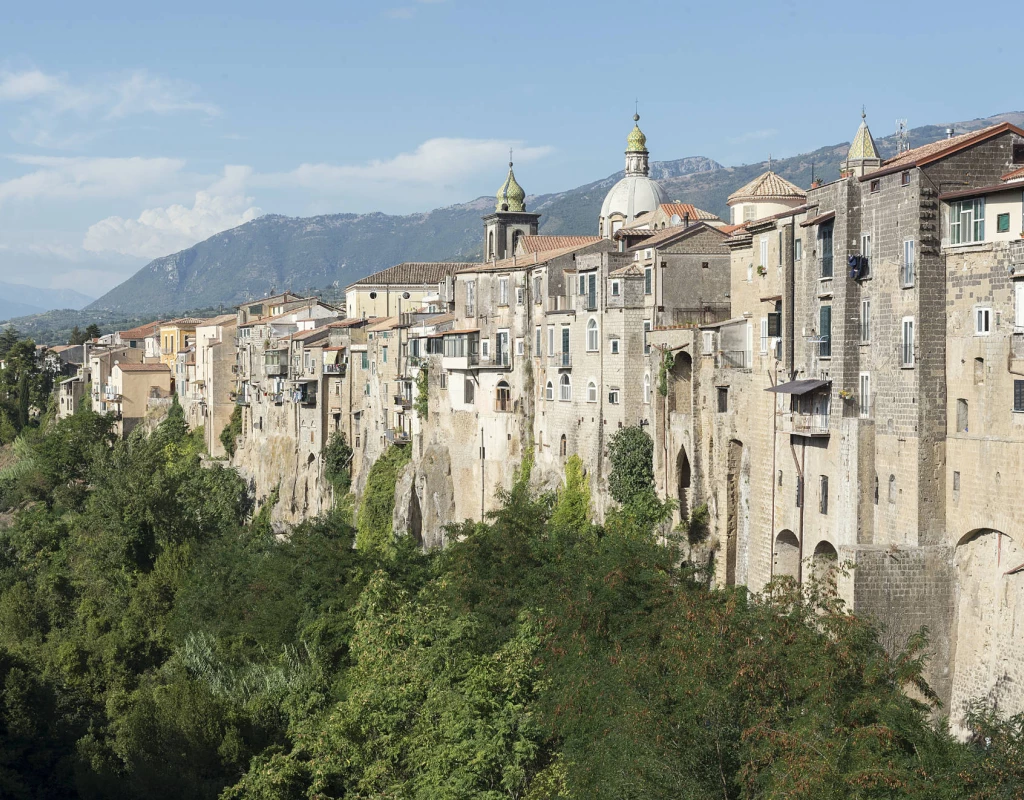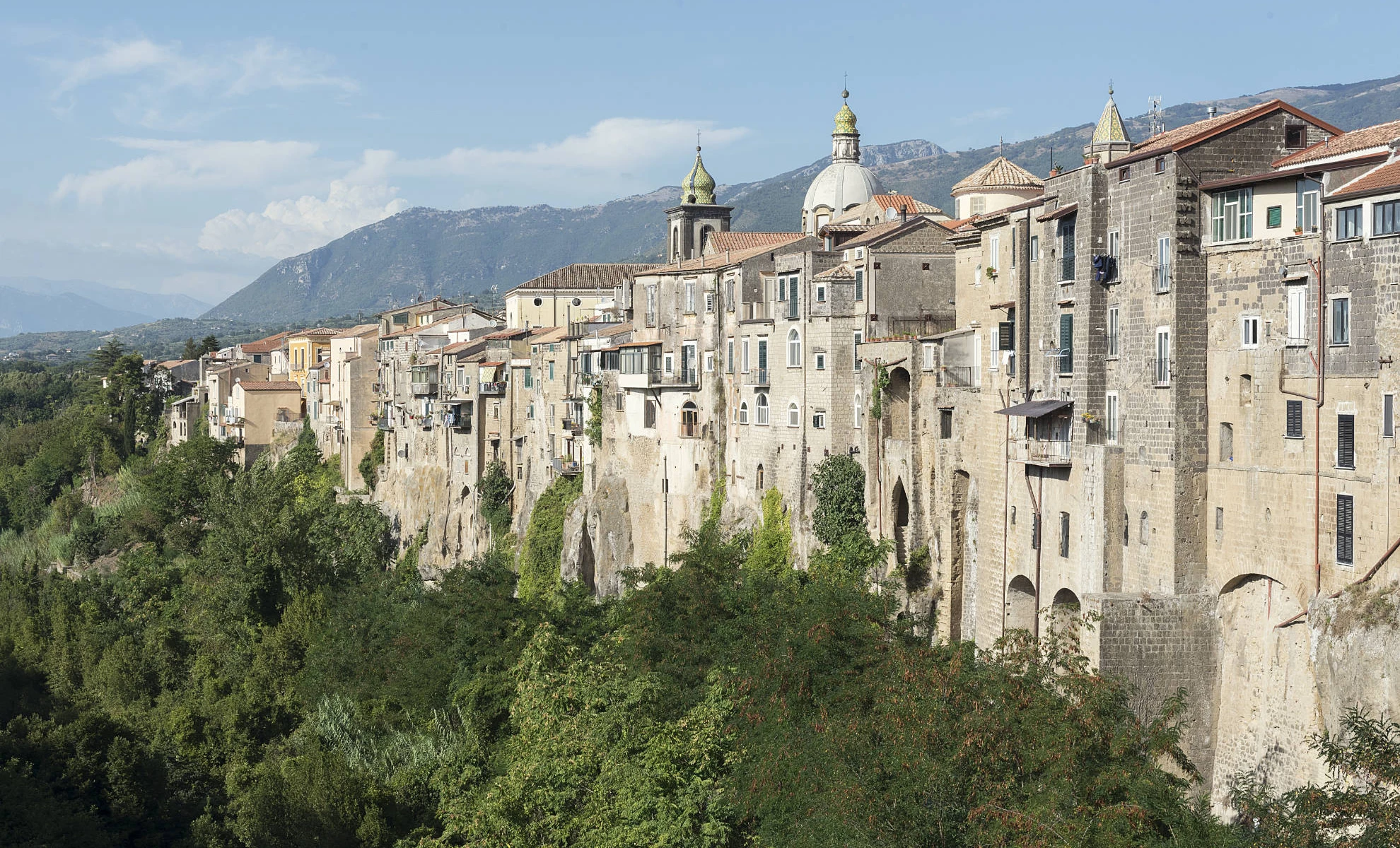The gray tuff houses, nestled on top of each other like in a nativity scene. The small windows, that overlook without simmetry the Martorano torrent, one of the tributaries of the Isclero river.
The luxuriant and verdant hedges of the valley, fidgeted by the wind of late August, which move as in a dance and climb up to the first floor of the houses. The domes of three churches that stand out from the roofs claiming their sacredness.
This is the most famous photograph of Sant’Agata de’ Goti, the pearl of Sannio. Formed more than thirty thousand years ago due to a volcanic eruption, the arches in the tuff rock are there to remind us that the Romans passed by and founded the Castrum, the citadel where the veterans of the empire battles lived. Only later, in 42 BC, this pleasant place on the slopes of Mount Taburno became a colony of the emperor Octavian Augustus. And so the name, Sant’Agata de’ Goti,, has very ancient origins and reflects the path of this place in history: the Middle Ages, the Norman era, the Lombard one.
Ph. Flaviana Frascogna

Historians have reconstructed that the town originally corresponded to the ancient Caudina city of Saticula, because Samnite necropolises have been found throughout the area of the Isclero river. Traces of Saticula are found in Tito Livio and in Virgil's Aeneid. It was then the Norman Bertrand De Goth who called it Sant’Agata de’ Goti, when in the fourteenth century he became lord of the “De Gotì” feud, by permission of Robert of Anjou.
Ph. Flaviana Frascogna

When the photograph of the tuff rock appears live on the left, for those coming from the motorway who find themselves walking on the bridge over the Martorano, it is immediately evident why this windy village has been part of the circuit of the most beautiful villages in Italy since 2012. A walk in the downtown, with the classic semicircle shape, is a jump into the Middle Ages.
On a white-paved Via Roma the shops are still closed at the end of August, the few people on the street look relaxed and enjoy the Isclero breeze that softens the summer heat. The arcades offer a refuge from the sun. The side streets are on a human scale and the squares, like the one dedicated to Umberto I, are adorned with fragrant citrus trees.
Ph. Flaviana Frascogna

The town's cinema still has the ancient writing carved on the wall. Many houses have glass doors and hand-embroidered white curtains to protect domestic life from curious eyes. Traffic is a distant memory and so is the city, with its anxieties and expectations. The slow pace inspired by the village is reflected in the eyes of the children who play football in the street as if they were in the backyard. Free, away from the apprehensive gaze of their parents, they stop the ball and say hello every time someone arrives.
Ph. Flaviana Frascogna

But Sant’Agata de’ Goti is not just a place of charm, because here is History. The Palazzo Vescovile, the church of San Menna, the Cathedral. And then nature, because the town is part of the Taburno-Camposauro Regional Park, which has existed as a protected natural area since 1993. And finally, viticulture: thanks to Falanghina and Aglianico wines, Sant’Agata de’ Goti has joined the National Association of Wine Cities.

